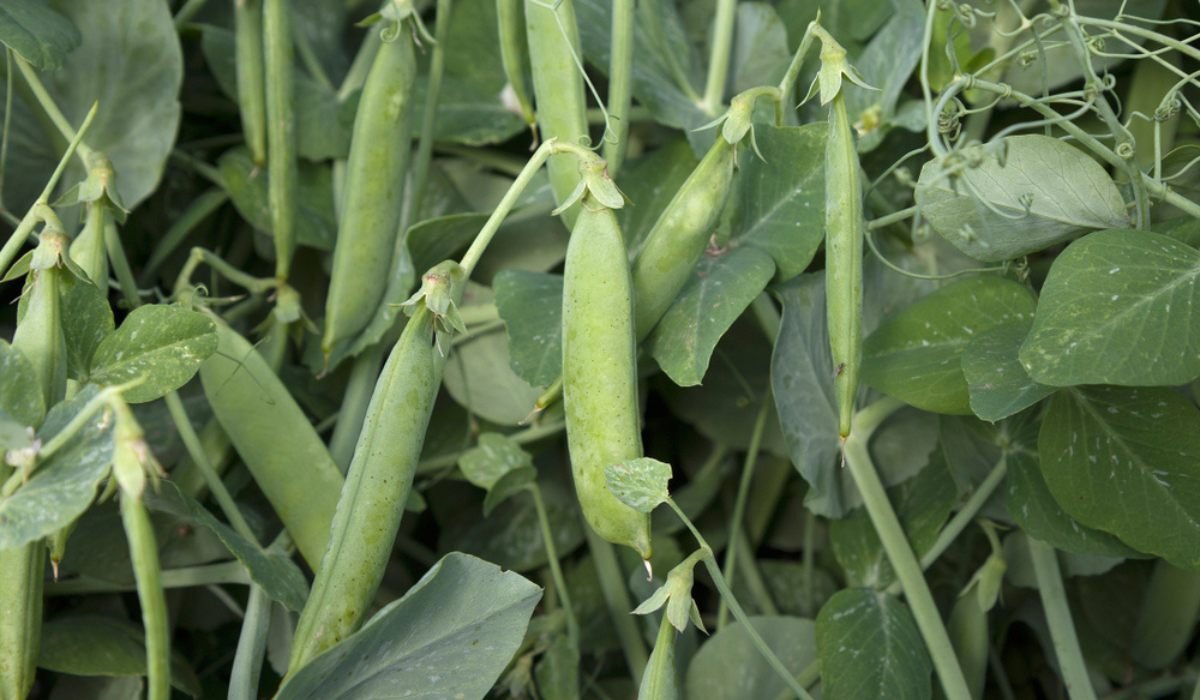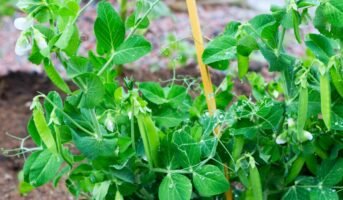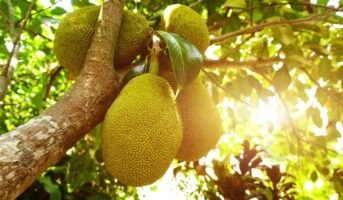Pisum Sativum is the scientific name of a pea plant. Peas can be green or yellow, and each capsule includes many peas. Botanists refer to peapods as fruit because they comprise seeds and develop from the ovum of a (pea) bloom. Read on to learn more about growing and maintaining pea plants in your home garden.
See also: Cicer arietinum: Bring home chickpea and grow this herbaceous plant in your garden
Pea plant: Quick facts
| Botanical name: | Pisum sativum |
| Leaf type: | Compound pinnate |
| Varieties available: | English peas, snow peas, and sugar snap peas |
| Height: | 2 to 3 feet tall |
| Season: | Oct to November |
| Sun exposure: | Plenty |
| Ideal temperature: | 22 °C |
| Soil type: | sandy to heavy clay |
| Soil pH: | 6 and 7.5 |
| Basic requirements: |
|
| Ideal location for placement: | Sunny location and well-draining soil |
| Ideal season to grow: | Winter |
| Maintenance: | Very low |
know about: cicer arietinum
Pea plant: Physical description
Pea plant is an evergreen plant. It’s a crop grown worldwide; based on where you live, you can plant it from the cold season to midsummer. On average, a pea measures approximately between 0.1 and 0.36 grams. Immature peas (and the delicate pod in snow peas) are eaten fresh, frozen, or canned; variants of the species commonly referred to as field peas have been grown to generate dry peas hollowed from a matured pod.
Pea plant: How to grow peas from seed?
- Peas planted in cold soil (40°F) germinate gradually; peas planted in soil at least 60°F (but not greater than 85°F) catch up.
- You’ll have to start over if the first peas don’t survive. Conversely, you could start your peas in a window box.
- Sow the second series of peas during the hot or early fall, six to eight weeks before the first frost date.
- Unless the plants are wilting, water peas sparingly, no more than 1 inch per week. We don’t want pea rot to spread. However, keep the plants from drying out. If this occurs, it will create no pods
- Hand-pick out any invasive weeds. If required, hoe or cultivate, but take care not to disturb the shallow, fragile roots of the peas.
- Pea leaves turn yellow for a variety of reasons. The strain of hot weather frequently causes this. During the hottest part of the day, offer part shade (e.g., row covers) and water thoroughly.
- Fertilising plants is mainly pointless if they are deeply mulched with grass cuttings, pulverised leaves, or another degradable material.

Source: Pinterest
Pea plant: Care tips
- One thing is sure: peas require the sun’s rays for growth and development. They also need well-drained soil that can maintain moisture for an extended period.
- Add potting mix to the land between two and three weeks before planting peas to improve soil fertility.
- Only water the plant when there isn’t sufficient rain to provide an inch (2.5 cm) of water per week. Because spring is pretty wet, you may not need water.
- Mulch around increasing peas to keep humidity in and weed growth at bay. Maintain an eye out for cutworm and aphid damage. Water pea plants only at the foundation, directly on the soil, to avoid disease.
How to grow pea plants in pots?
Pea plants can also be planted in a pot and kept both indoors and outdoors. Keep in mind that peas grown in pots need more water than those grown in a garden. This frequent irrigation leaches nutrients from the soil, increasing the need for fertilisation to grow healthy peas in pots. Here are the steps for growing peas in containers:
- Choose the variety of pea you want to plant.
- Pea plants are a warm season crop. So, grow them in the spring season when temperatures reach over 16 degrees celsius.
- Now, select a container with drainage holes. Make sure the chosen pot measures at least 12 inches.
- Fill the pot with soil, leaving a 1 inch space at the top.
- Create a support in the centre of the pot with stakes or bamboo poles.
- Plant the seeds 1 inch beneath the soil and 2 inches apart from each other.
- Water the seeds thoroughly and add a 1 inch layer of mulch on the top.
- Keep the pot in a lightly shaded area for 9-13 days until germination. After that, you can move them to an area with full sun exposure.
- Once the peas have sprouted, fertilise twice during the growing season with a low-nitrogen fertiliser.
Pea plant: Benefits and uses
- Fresh peas are frequently cooked and flavoured with ghee or mint as a main dish vegetable. Fresh peas are popular in Indian dishes like aloo matar and matar paneer, but frozen peas are also available.
- Salt and pepper are frequently used when serving peas. Fresh peas work well in stews, soups, vegetables, and pot pies. Capsule peas are popular in stir-fried dishes, especially in American Chinese cuisine.
- Peas are high in vitamins C and E, zinc, and other phytonutrients that help your immune system. Other additives, such as vitamins A and B and cholesterol, aid in the reduction of swelling and the prevention of chronic diseases such as diabetes, cardiovascular disease, and joint problems.
- Due to their fibrous nature, peas can enhance bowel movement. This aids in stomach clearing and increases appetite. Peas actually aid digestion by sequestering gastric juices that stimulate appetite.
FAQs
What are the different types of peas?
Peas are classified into three types: English peas, snow peas, and sugar snap peas.
What does pea mean in biology?
A plant and its fruit belong to the family Pisum, which is widely cultivated for food. It has papilionaceous flowers, and the pith is a vegetable known as a pod.
Housing News Desk is the news desk of leading online real estate portal, Housing.com. Housing News Desk focuses on a variety of topics such as real estate laws, taxes, current news, property trends, home loans, rentals, décor, green homes, home improvement, etc. The main objective of the news desk, is to cover the real estate sector from the perspective of providing information that is useful to the end-user.
Facebook: https://www.facebook.com/housing.com/
Twitter: https://twitter.com/Housing
Email: [email protected]











